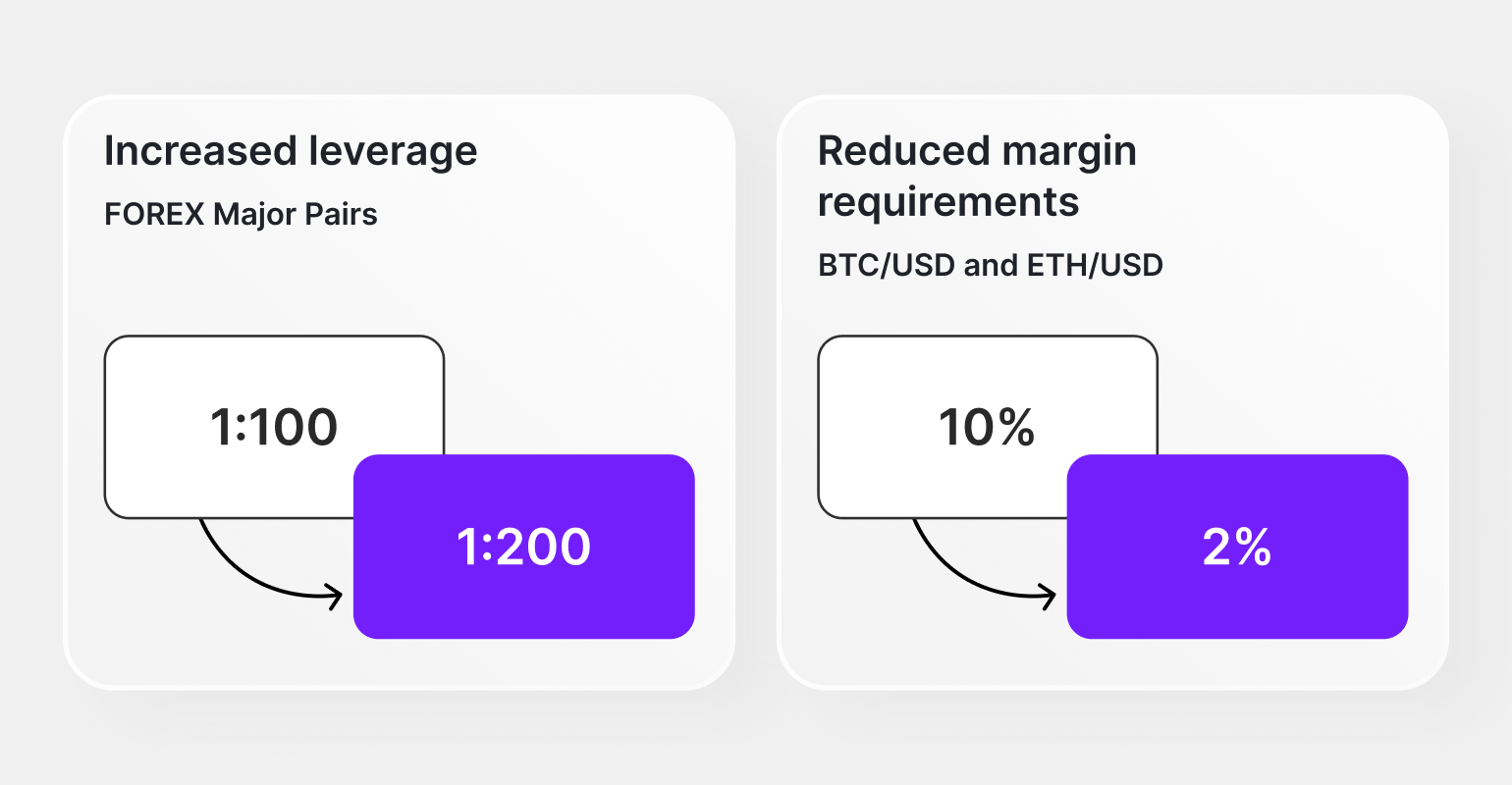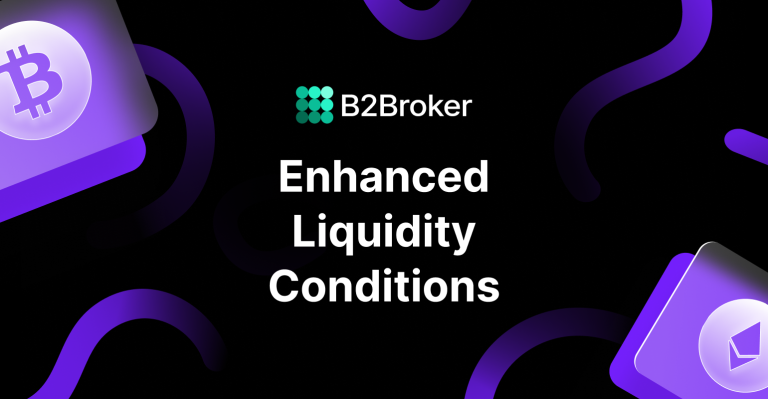B2Broker, the leading technology and Prime of Prime liquidity provider, proves its dedication to excellence by offering innovative solutions that respond to client demands and allow them to boost their businesses.
This time, B2Broker elevates brokers’ competitive advantage with increased leverage on major Forex currency pairs to 1:200 while reducing the margin requirements from 1% to 0.5%.

Additionally, the company responds well to the recent crypto market growth and clients’ demand for higher leverage. B2Broker increases the leverage ratio up to 1:50 for BTC/USD and ETH/USD while reducing the margin requirements from 10% to 2%. This allows brokers to capitalise on the thriving market opportunities and enhance their position significantly.
B2Broker’s Exciting Journey in Liquidity Provision
B2Broker utilises its vast market experience of over a decade with exemplary liquidity solutions that have grown over the years. B2Broker offers over 1,500 instruments spanning 8 asset classes, including FOREX, Crypto CFD, Spot Indices, Precious Metals, Single Stocks, ETFs, Commodities and NDFs CFD.
B2Broker offers access to deep liquidity pools from Tier-1 sources, which leads to ultra-fast execution and tight spreads. It fosters seamless connectivity across multiple trading systems through advanced technology platforms and FIX API integrations, such as B2Trader, cTrader, oneZero, Prime XM, Centroid, TFB, TradeLocker, Your Bourse, FX Cubic, and MT4/MT5.
Users enjoy advanced liquidity aggregation and distribution over the B2Broker infrastructure, enhancing order execution and risk management.

B2Broker’s liquidity solutions are characterised by their sophisticated ecosystem, vast connectivity options and custom liquidity setup developments according to the client’s business requirements.
Over the years, the company introduced multiple innovative tools and solutions that reinforce its leading role. In 2023, B2Broker introduced NDFs as CFDs, with outstanding next-day settlements.
Moreover, the company led the race in offering crypto CFDs as spot and perpetual futures LPs. Nevertheless, these conditions have now been further improved with the best margin conditions.
B2Broker serves 250+ institutional clients and 30 professional funds. Its robust financial foundation strengthens its balance sheet and allows the company to reduce margin requirements and meet and exceed its clients’ demands.
Increasing the leverage ratio on the most demanded Crypto and Forex currency pairs empowers brokers to offer greater flexibility in capital management and allows them to attract more users.
B2Broker Group Chief Dealing Officer John Murillo commented on this announcement:
“This strategic update not only enhances our clients’ competitive edge but also augments their capacity to cater to the evolving demands of their clientele, attract new business, and elevate their service standards by leveraging our liquidity solutions.
Thanks to our robust balance sheet and extensive client base, coupled with our impressive trading volumes, we stand at the forefront of the market. Our innovative mindset has been evident throughout our journey. We were the first to introduce crypto CFDs based on spot and, later, on perpetual futures. In addition to FOREX, today, we proudly offer over 150 crypto CFD pairs, a testament to our commitment to innovation and meeting the diverse needs of our clients.”
Final Thoughts
B2Broker keeps revolutionising the industry and reinforcing its leading position in the FinTech space. With a sophisticated ecosystem and vast liquidity offerings, B2Broker accommodates different business models and is committed to innovating and enhancing solutions that give its clients a competitive advantage.
In this liquidity offering update, B2Broker significantly upgrades the leverage, giving clients, traders, brokers, hedge funds, proprietary trading desks and other financial firms the best conditions to grow and boost their businesses.
Email: sales@b2broker.net
Phone: +44 208 068 8636
Website: b2broker.com












 Bitcoin
Bitcoin  Ethereum
Ethereum  Tether
Tether  XRP
XRP  USDC
USDC  Solana
Solana  TRON
TRON  Lido Staked Ether
Lido Staked Ether  Cardano
Cardano  Avalanche
Avalanche  Toncoin
Toncoin